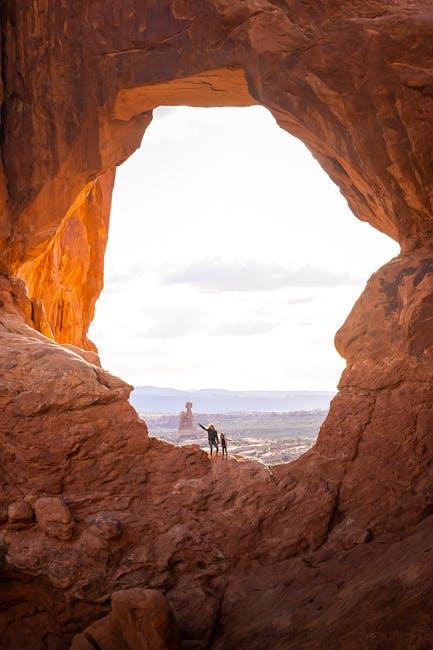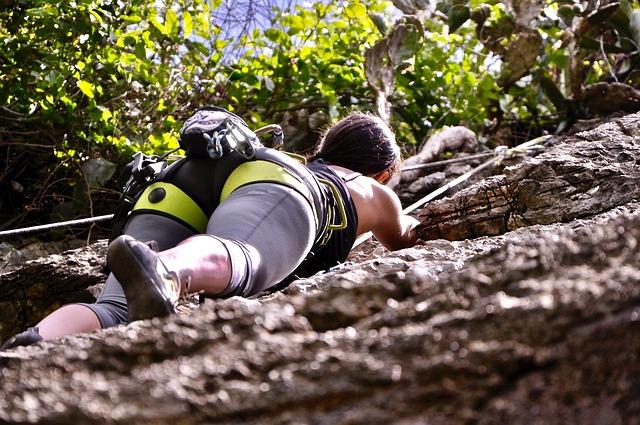When it comes to bouldering,the thrill of scaling towering rock formations is only half the adventure; the othre half involves securing your safety as you tackle those heights. Enter the climbing crash pad—a boulderer’s essential companion that provides a crucial layer of protection against falls. In this article, we delve into the world of top-rated climbing crash pads, exploring the triad of essential qualities: safety, portability, and durability. Whether you’re a seasoned climber or a novice venturing into the realm of outdoor bouldering, understanding what to look for in a crash pad can make all the difference in your climbing experience. Join us as we break down the best options available, ensuring you can ascend with confidence while keeping safety at the forefront of your adventures.
Exploring the Essential Features of Climbing crash Pads
When selecting a climbing crash pad, understanding its essential features can substantially enhance safety during your bouldering sessions. Impact absorption is paramount; pads are typically constructed with varying densities of foam to effectively cushion falls.Look for pads that combine closed-cell and open-cell foams for optimal performance. The thickness of the pad matters as well, as a thicker pad often provides better protection on uneven terrains. Additionally, evaluating the dimensions and shape is crucial for choosing a product that suits your climbing style. Wider pads cover more area, while specific shapes can more effectively fit with various climbing locations.
Portability is another critical feature, especially for climbers on the go. Many crash pads come with adjustable shoulder straps, making them easy to carry, while some even feature built-in backpack systems.Consider the weight and compactness of the pad when folded, as this will make a significant difference when trekking to remote climbing spots. Lastly, the durability of the material should not be overlooked; high-quality fabric is essential for withstanding the elements and the wear and tear of frequent use. To summarize, keep an eye out for:
- Impact absorbing technology
- Options for portability
- Whether-resistant fabrics

Understanding Safety Standards and Ratings in Crash Pads
When it comes to climbing crash pads, understanding safety standards and ratings is crucial for ensuring a secure bouldering experience. Crash pads are designed to absorb impact, but not all pads are created equal. Safety ratings typically prioritize factors like impact absorption, compression resistance, and durability. Look for pads that meet industry guidelines, which can frequently enough be identified thru certifications or ratings provided by manufacturers. Features such as closed-cell foam layers and high-density materials contribute significantly to a pad’s ability to protect climbers upon landing, reducing the risk of injury.
In addition to basic safety features, portability plays a vital role in the selection of a crash pad. A well-designed pad should offer easy transport options, which can include adjustable straps, lightweight materials, and a compact folding design. A good balance between weight, storage size, and protection level enables climbers to navigate their adventures without compromising on safety. Consider these essential factors when evaluating your options:
- Weight: Lightweight crash pads are easier to carry.
- size: Larger pads may offer better coverage.
- Foam Quality: High-quality foam leads to better impact resistance.
- Closure Systems: Secure closures enhance portability.

Evaluating Portability: balancing Size and Weight for Adventurers
When it comes to choosing a climbing crash pad, portability becomes paramount for those who venture into the great outdoors. adventurers must strike a careful balance between the size of the pad and its weight,especially if they plan on carrying it for long distances. A crash pad that is too heavy can become burdensome, detracting from the overall climbing experience. Therefore, looking for a lightweight option, preferably one that maintains robust protective features, should be at the top of every climber’s checklist. Compact designs that can be easily folded or rolled up also play a crucial role in minimizing space when packed.
To make the selection process easier, here’s a rapid reference table to guide climbers through the essentials of weight and compactness:
| Crash Pad model | Weight (lbs) | Folded Size (in) | Protection Level |
|---|---|---|---|
| Model A | 10 | 30 x 40 | High |
| model B | 8 | 28 x 36 | Medium |
| Model C | 12 | 32 x 42 | High |
| Model D | 9 | 24 x 30 | Medium |
Climbers should consider not only the weight but also how the crash pad packs down after use. A well-designed pad will allow for efficient storage and transportation, making those challenging hikes to climbing spots more manageable. Don’t forget to check for features like carrying straps and handle placement, as these can significantly upgrade the ease of mobility, ensuring that adventurers can focus on the thrill of climbing rather than the hassle of equipment logistics.

Durability in Action: The Best Materials for Long-lasting Protection
When it comes to climbing crash pads, the material can be the key differentiator in ensuring long-lasting protection. High-density foam is frequently favored for its ability to absorb impact effectively, providing that essential cushion when you hit the ground. Additionally, heavy-duty fabrics like 1000D nylon offer a water-resistant finish that not only protects against the elements but is also tough enough to withstand the abrasions of rough terrain. These materials combined support both durability and functionality, making them ideal for serious climbers who seek reliable performance over time.
Another crucial aspect to consider is the construction techniques used in these pads. Double-stitched seams can significantly enhance durability, reducing the likelihood of breakdown from repeated use. Furthermore, features like reinforced edges help maintain the structural integrity of the pads while adding an extra layer of protection. Here’s a quick comparison of some popular materials and their benefits:
| Material | Durability | Water Resistance | Impact Absorption |
|---|---|---|---|
| 1000D Nylon | High | Yes | N/A |
| High-Density Foam | Medium | No | Excellent |
| Polyester | Medium | Yes | Good |
| canvas | High | Varies | N/A |
Future Outlook
In the world of climbing, where safety, mobility, and resilience are paramount, selecting the right crash pad becomes a crucial aspect of your outdoor adventures. As we’ve explored in this article, the top-rated climbing crash pads not only cushion falls but also enhance your experience on the rock, allowing you to focus on the climb rather than the potential risks.
From sleek designs that prioritize portability to durable materials that withstand the test of time and rough terrain,the ideal crash pad serves as your trusty companion on every boulder problem and highball ascent. As you prepare for your next climbing outing, consider the specific features that align with your style and needs, ensuring you make an informed choice.
After all, the right gear empowers you to push your limits and embrace the thrill of climbing with confidence. So,as you venture onto the boulders or up the cliffs,take a moment to appreciate the innovations that keep you safe,all while complementing the spirit of adventure that defines our sport. Happy climbing!



